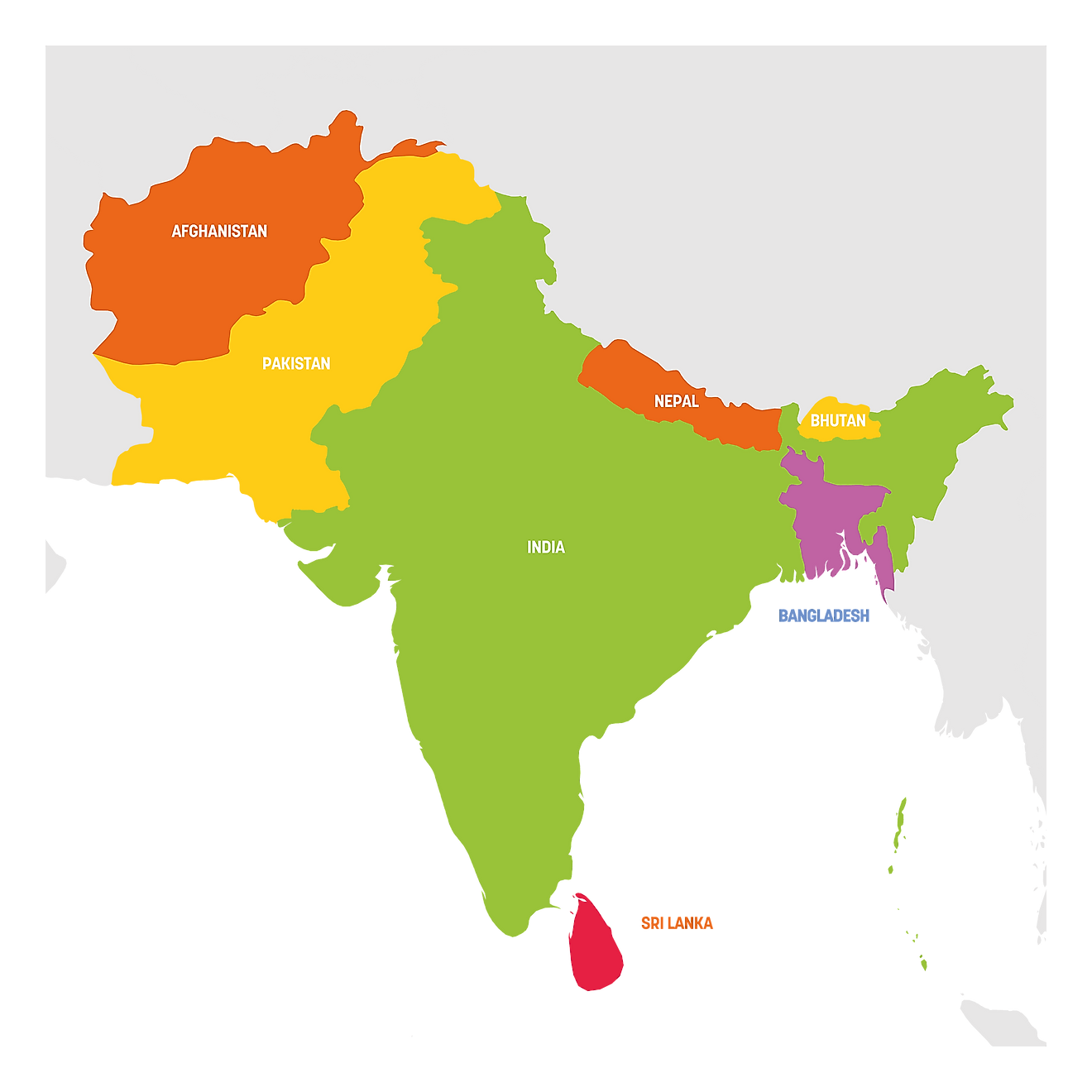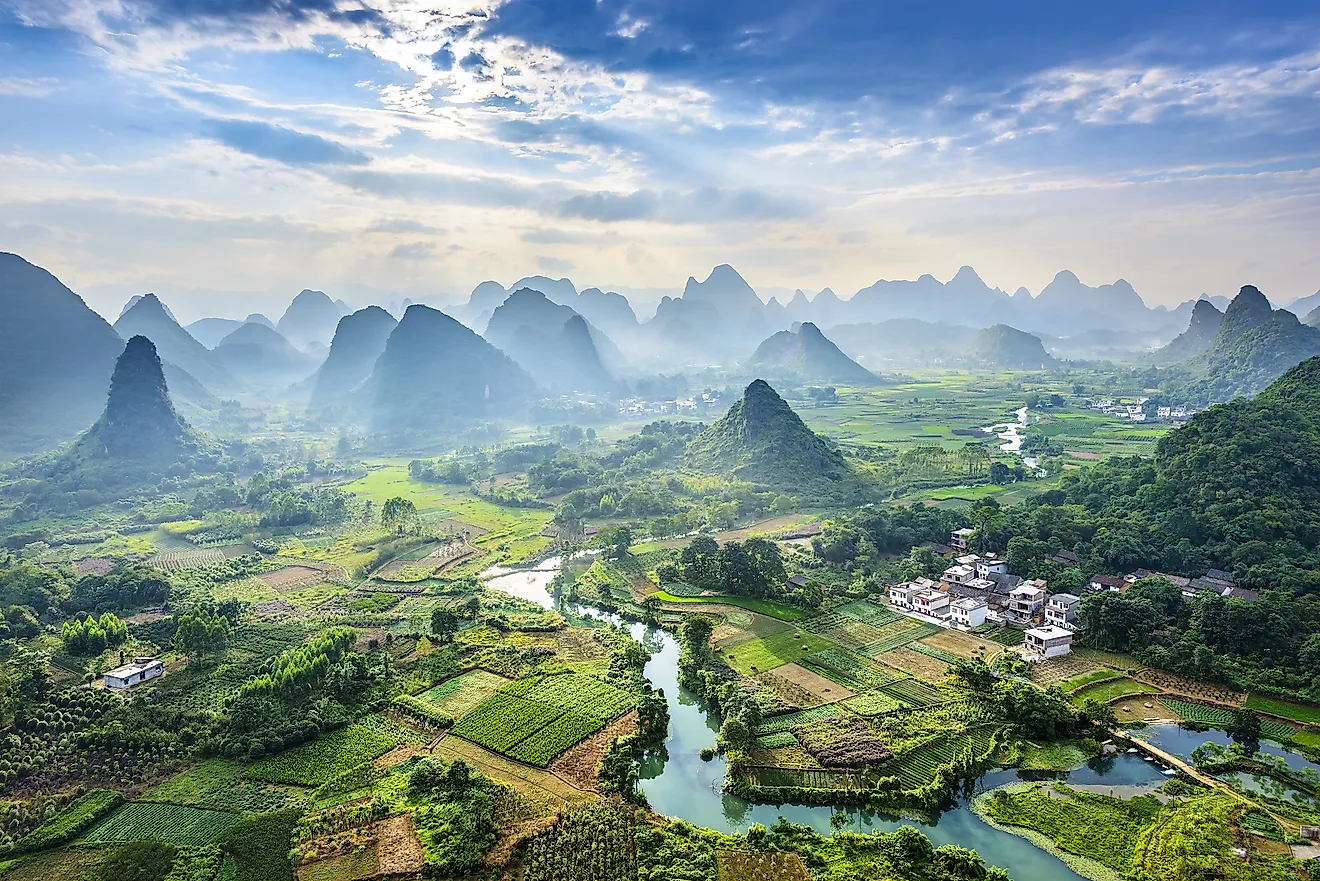Ways The Himalayas Influence Life In The Indian Subcontinent
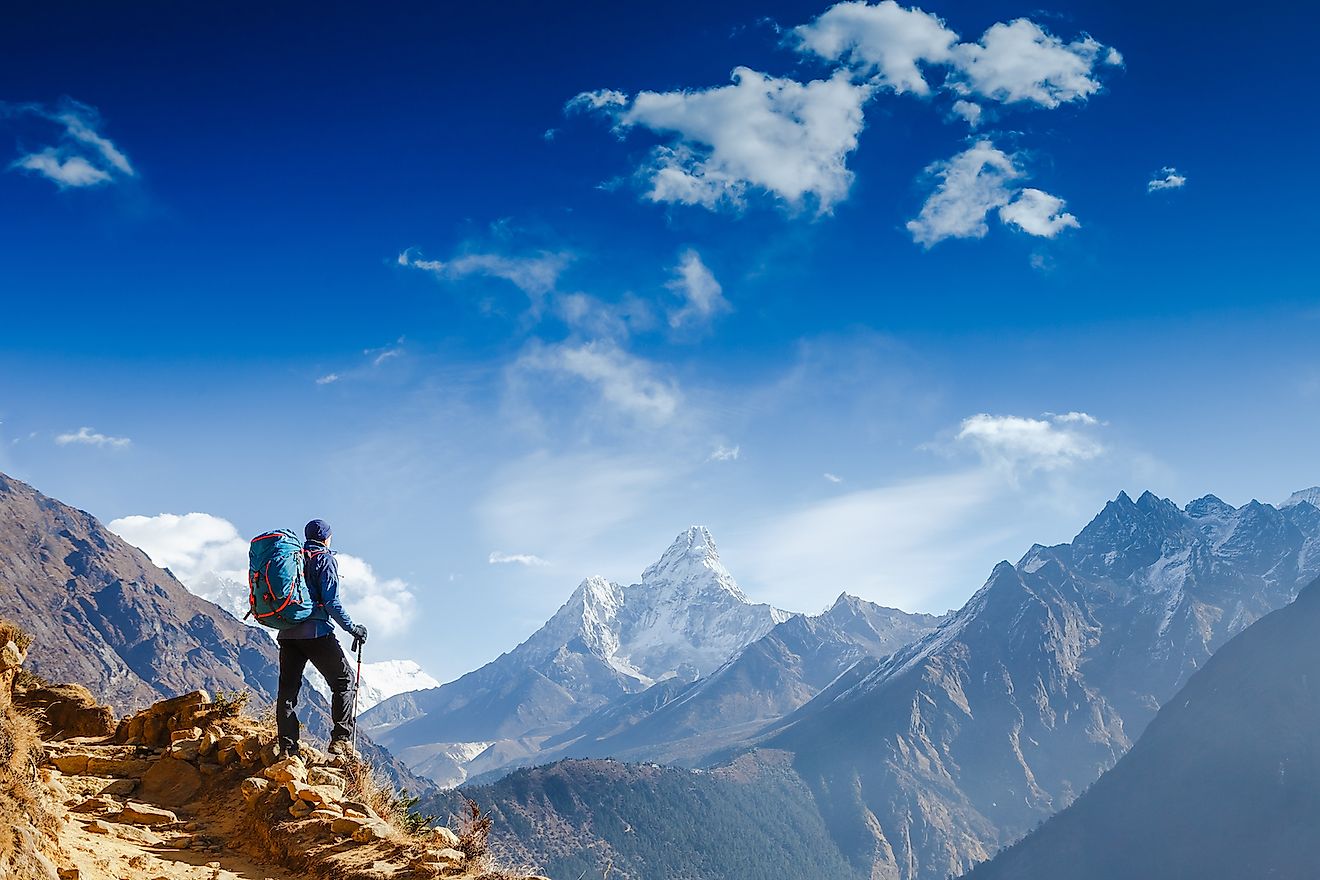
- The Himalayan Mountains influence everything from the weather to the economy, the energy sources, rivers, and tourism of the Indian Subcontinent.
- This mountain range is beautiful but this comes with the high price of landslides and floods.
- Many tourists flock to the Himalayas to climb peaks like Mount Everest, but they are leaving trash in their wake and stressing the area's resources.
The Himalayas are a beautiful and majestic mountain range located in South Asia where it acts as a divide between the plains of the Indian subcontinent and the Tibetan Plateau.
In geological terms, the Himalayas may seem old but they are actually rather young. This range has been around for somewhere between 40 and 50 million years, and began forming when the Indian and Eurasian tectonic plates first collided. Amazingly, the Himalayas are still growing to this day by about 1 cm every year, and are home to Mount Everest, the tallest mountain in the world, and other sought-after peaks.
Like every mountain range, the Himalayas influence the lives of those who live near them. In fact, these mountains are one of the most domineering geographical features in India. Life on the Indian Subcontinent is greatly affected by the Himalayas. From the weather, to the economy, tourism and more, these mountains have been integral at helping shape the lives of those around them.
Weather
The Himalayas have a significant effect on the weather of the Indian Subcontinent. These mountains create conditions for heavy precipitation on the Indian side of the range, but a dry, arid climate on the northern side, in Tibet. Most of the southwesterly winds give up their rain in India before passing north over the Himalayas. The range is so high it also stops cold continental air from traveling north into India during wintertime.
In addition to affecting precipitation, the Himalayas also contribute to landslides and flooding. As many say, the mountains are beautiful but this beauty can come at a price. In places like Uttarakhand in northwestern India, heavy rainfalls and glacial lake outburst floods can trigger landslides that devastate communities. When this happens, many people often decide to relocate and villages are left deserted. This leads to economic stagnation and forced migration.
Sometimes monsoon rains hit as snow is melting in these mountain villages, as well. This double-whammy creates the potential for much flooding. On June 15, 2013 thousands lost their lives in heavy rains that targeted the Mandakini Valley, east of Nanda Devi National Park. In these ways, the Himalayas can be an inspiring place to live, but also a potentially dangerous one.
Economy
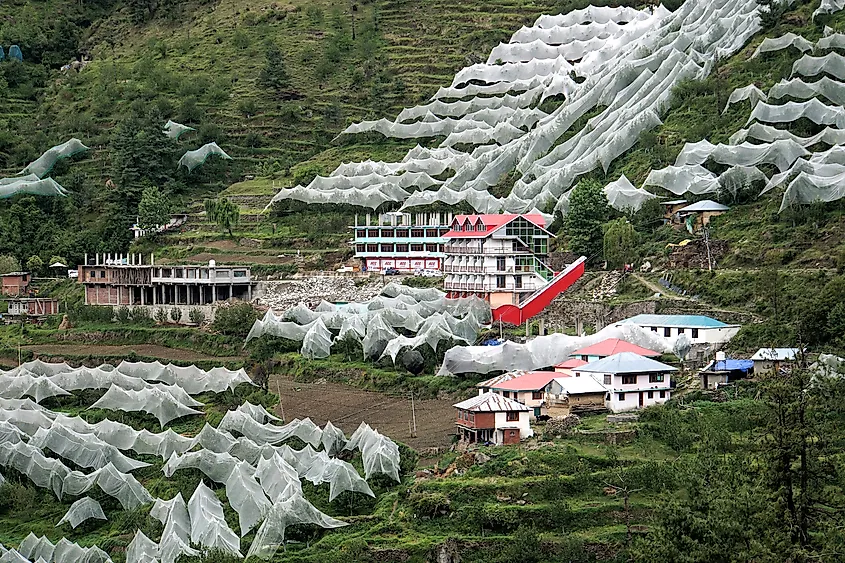
The economy of the Indian Subcontinent is highly affected by the presence of the Himalayan mountain range. The dry air of the Vale of Kashmir is perfect for growing saffron, which is highly prized worldwide. This area also has vineyards in which grapes are grown to make wine and brandy, as well as almond and walnut trees to be sold worldwide. Apple, peaches, pears, and cherries are grown in the Kullu valley of Himachal Pradesh and sold in India’s cities, and the country’s famous Darjeeling tea is grown in its namesake’s district at the foot of the mountains. The Himalayan region is also home to cardamom plantations, and those that grow medicinal herbs. Rice, maize, wheat, tobacco, and ginger also grow in the area's terraced slopes.
This area is also rich in minerals. These include sapphires, alluvial gold, copper and iron ore, borax, sulfur, coal, bauxite, mica, gypsum, graphite. Lead, and zinc. The Kashmir region has the most deposits with minerals found in the the Indus River, the Vale of Kashmir, and the Jammu Hills. Minerals are also found in Nepal, Bhutan, and Sikkim.
Rivers
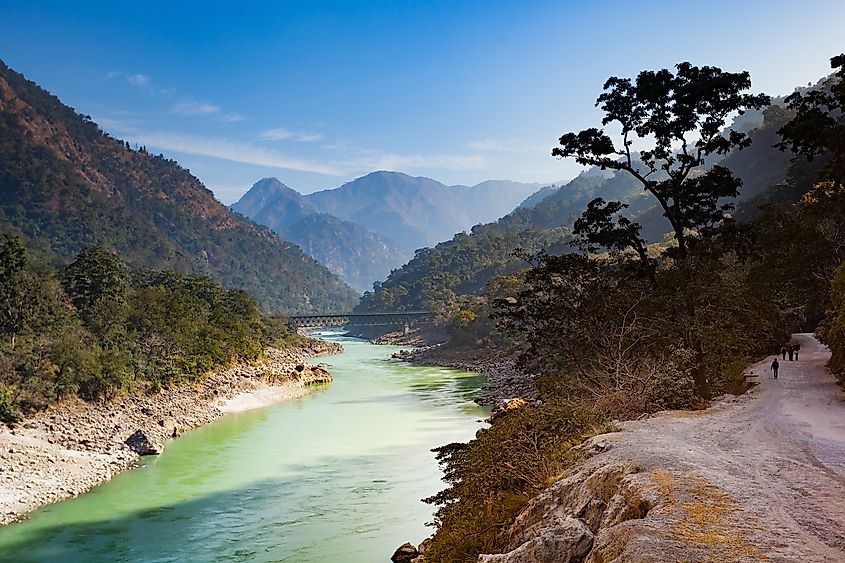
Most of the major rivers in India originate in the Himalayas. In this way, the mountains are the source of the very lifeblood of parts of the country. The Indus, Chenab, Jhelum, Ravi, Beas, Saraswati, Ganges, Sutlej, Brahmaputra, and Yamuna rivers all begin their journey in the mountain range, providing water for people to drink and wash in, and also to use for growing their crops and raise their animals. These rivers are perennial, and flow filled with water from heavy rainfalls, snow melt, and warming glaciers.
Energy
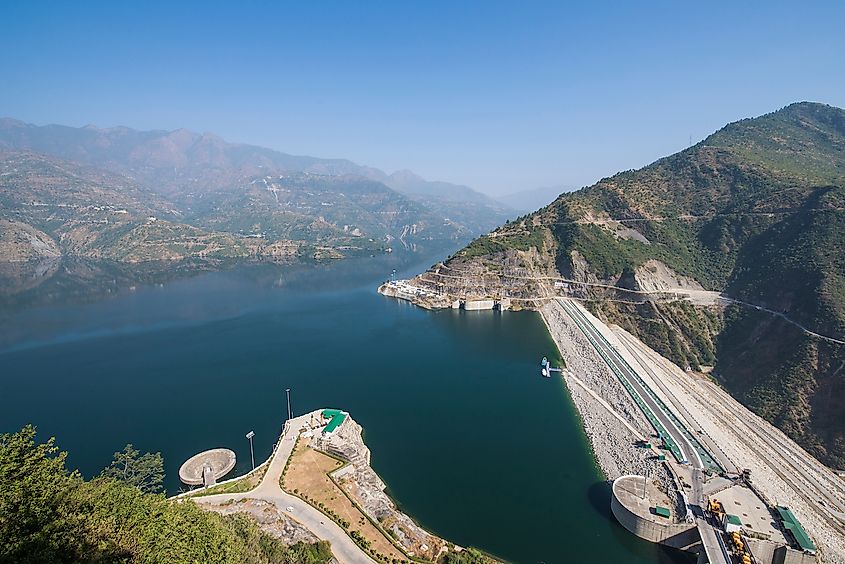
Apart from providing life-giving water to people on the Indian subcontinent, the rivers in this region also generate electricity. The Himalayan rivers were first harnessed for this purpose in the 1950s. Hydroelectric stations exist along the Kosi, the Gandak, and the Jaldhaka rivers, supplying electric power to both Bhutan and Nepal, and on the Sutlej in Himachal Pradesh. China built the Zangmu hydroelectric station on Tibet’s Yarlung Zangbo River in 2015, and Nepal has also constructed a generating station along rivers. One of the biggest hydroelectric projects in the Himalayas was built in 1963 At Bhakra-Nangal on the Sutlej River found in the Outer Himalayas. Because of the power of the Himalayan rivers, people in the region have been able to live with the benefits of electricity that may have been difficult to bring to the region otherwise.
Tourism
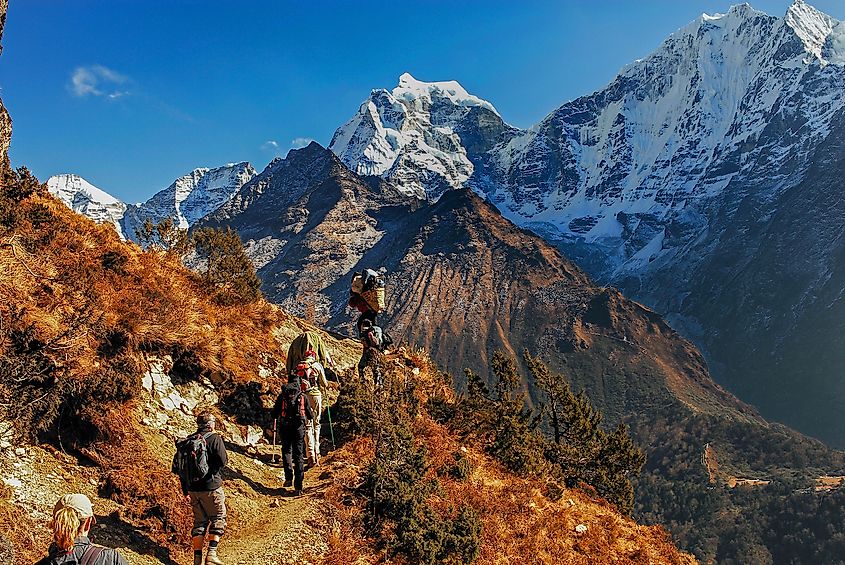
Finally, tourism is a force that affects the lives of people in the Himalayan region, and it is largely due to the mountains themselves. People flock to see them. Mount Everest, the tallest peak in the world, can be found in this region, as can Kanchenjunga, Nanga Parbat, Manaslu, and others. Each year, people from all over the world come to scale these famous mountains and to bask in their glory as part of personal and religious pilgrimages. This has come with rewards and drawbacks. Increases in the number of foreigners coming to visit the Himalayas as sightseers and trekkers has boosted employment in the area. It has also stressed the region’s resources, and its natural environment. Mount Everest now has a 60,000-pound trash problem that is being tackled by volunteers, step by step. A permanent solution has yet to be decided upon.
Climate Change Is A Looming Threat
The Himalayas are a mighty force that play an active part in shaping the lives of those who live near them. From weather patterns that create fertile soils, to rushing rivers that generate electricity and majestic mountains that call the curious at heart, they leave an impact. The future will tell how inhabitable the area's traditional villages will remain as modern ways take over and climate change exacerbates weather problems. Hopefully the right balance can be found to allow the natural wonder of the Himalayan region to persist alongside people for years to come.









